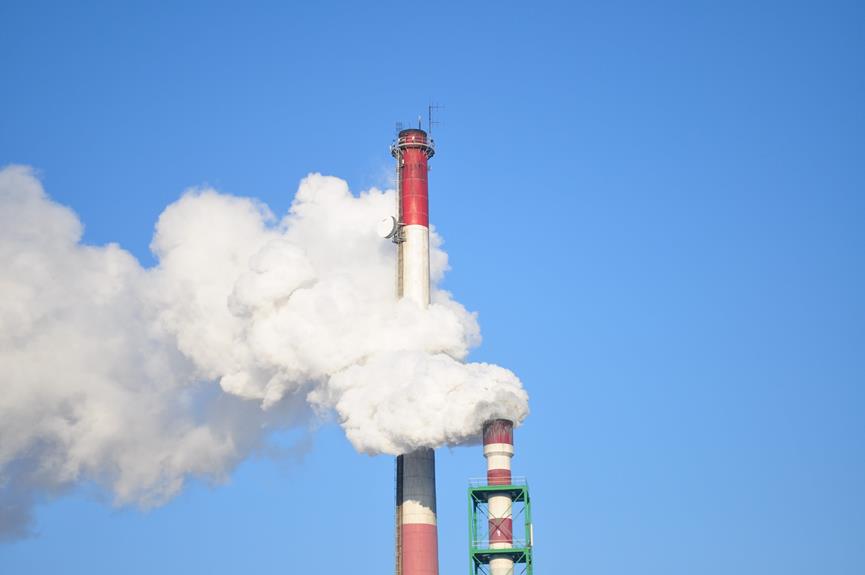H.B. Fuller Company
H.B. Fuller Company, established in 1887, is a global leader in industrial adhesives, sealants, and specialty chemical products. Renowned for innovation and expertise, H.B. Fuller serves a diverse array of markets including packaging, construction, and consumer products. The company's commitment to quality, sustainability, and customer collaboration has solidified its position in the market. With a robust research and development program, H.B. Fuller remains at the forefront of technological advancements in adhesive solutions, striving to meet the evolving needs of its customers while adhering to stringent safety and environmental standards. As H.B. Fuller continues to expand its global footprint, it remains dedicated to delivering exceptional value and service to its stakeholders.

Key Takeaways
- H.B. Fuller Company used asbestos in some of their products.
- Many workers were affected by asbestos exposure and filed claims against H.B. Fuller.
- Former H.B. Fuller Company employees are now struggling with serious lung diseases like asbestosis and pulmonary fibrosis.
- Asbestos exposure victims can file claims for compensation.
Asbestos Product Usage
The H.B. Fuller Company incorporated asbestos into various adhesive products, exposing employees to hazardous fibers during manufacturing and application processes. As awareness of the dangers of asbestos grew and asbestos regulations tightened, the scrutiny over product liability intensified. Companies like H.B. Fuller faced legal challenges and financial repercussions for their role in jeopardizing the health of workers and consumers. The presence of asbestos in adhesives meant that individuals who handled these products could inadvertently inhale or ingest toxic fibers, leading to serious health issues. The company's practices came under legal fire, particularly as former employees began to exhibit symptoms of asbestos-related diseases. The legacy of asbestos use in the industry continues to be a contentious issue, with companies held accountable for non-compliance with safety standards and negligence.
Worker Health Claims
Facing numerous health claims, H.B. Fuller Company confronts the legal ramifications of its employees' prolonged asbestos exposure. Affected workers, many of whom held high-risk jobs such as factory and maintenance roles, have initiated a legal process seeking worker compensation for severe lung diseases linked to asbestos. These conditions, ranging from asbestosis to pulmonary fibrosis, often present subtle symptoms that can be easily misdiagnosed, complicating the path to rightful compensation.
The company now must navigate the complexities of these health claims, ensuring that the legal process adheres to worker compensation laws. This includes validating the legitimacy of claims and facilitating fair compensation for the workers whose health has been compromised due to asbestos exposure during their tenure at H.B. Fuller.
High-Risk Occupations
Several occupations at H.B. Fuller Company, particularly those involving direct handling of asbestos-containing materials, placed workers at a heightened risk of developing severe asbestos-related health conditions. As regulations on asbestos usage have evolved, it has become evident that past practices did not adequately protect employees from the long-term health effects of asbestos exposure. Factory workers, construction workers, and maintenance workers were among the most vulnerable, facing daily contact with asbestos without sufficient safety measures. Today, asbestos regulations are much stricter, aiming to prevent occupational exposure. Nevertheless, for many former H.B. Fuller employees, the legacy of such exposure continues to manifest in serious health issues, highlighting the critical importance of adherence to health and safety standards in all high-risk occupations.
Diseases From Asbestos
In light of the significant asbestos use historically at H.B. Fuller Company, employees are now experiencing a range of asbestos-related diseases, including malignant mesothelioma and asbestosis. These conditions, stemming from the health effects of asbestos, are severe and often life-threatening, leading to an increase in asbestos related lawsuits. As awareness of the dangers associated with asbestos exposure has grown, so too has the number of legal claims filed by affected workers seeking compensation for their illnesses. The latency period of these diseases means symptoms may not appear until decades after exposure, complicating diagnoses and legal proceedings. Nevertheless, the nexus between asbestos exposure at workplaces like H.B. Fuller and subsequent health complications has become a critical issue, underpinning the legal battles for justice and compensation.
Identifying Symptoms
The early detection of asbestos-related diseases is critical, yet the symptoms can be subtle and easily confused with those of more common respiratory conditions. Often these issues arise from causes of asbestos exposure, such as the inhalation of asbestos fibers in occupational settings. Workers in industries like construction or manufacturing may unknowingly be at risk. The effects of long-term asbestos exposure are particularly insidious, potentially leading to chronic respiratory diseases and cancers, including mesothelioma and lung cancer. Symptoms such as persistent coughing, shortness of breath, and chest pain might initially appear benign but warrant immediate medical attention if associated with a history of exposure. Timely identification can significantly improve prognosis and open avenues for appropriate medical and legal recourse.
Claim Eligibility Criteria
Having suffered from asbestos-related diseases due to their employment at H.B. Fuller Company, affected workers and their families may be eligible to file claims for compensation. The legal compensation process for an asbestos product liability claim requires a clear demonstration of harm caused by exposure to asbestos-containing products. Workers who have been diagnosed with diseases such as asbestosis, mesothelioma, or lung cancer, which are known to be linked to asbestos exposure, can initiate a claim. Furthermore, family members who have experienced secondary exposure may also qualify. The eligibility criteria demand careful documentation of medical history, employment records, and the extent of exposure. Prompt legal action is crucial, as statutes of limitations apply, restricting the time frame within which a claim can be filed.
Secondary Exposure Risks
Secondary asbestos exposure posed significant risks to the families of H.B. Fuller Company employees, often occurring through indirect contact with contaminated work attire. The inadvertent transfer of asbestos fibers from the workplace to the home endangered the health of spouses and children, leading to potential long-term health effects such as mesothelioma and other asbestos-related diseases. Preventing secondary exposure became crucial, necessitating rigorous decontamination protocols for workers' clothing and personal protective equipment. This was essential to safeguard the well-being of employees' families. Awareness and education about the dangers of asbestos were vital in mitigating these hidden risks, reducing the incidence of disease stemming from secondary exposure to this hazardous material.
Household Contamination
Through contamination of workers' clothing and personal effects, asbestos fibers from H.B. Fuller Company's facilities not only endangered employees but also their households, leading to additional health risks for family members. The inadvertent transfer of asbestos contamination into homes posed a sinister threat, as unsuspecting relatives were exposed to the same carcinogenic fibers that plagued factory environments. Daily routines, such as laundering work garments, turned into pathways for asbestos fibers to accumulate in domestic spaces, increasing the likelihood of family members developing severe respiratory conditions. The health risks associated with secondary exposure to asbestos, such as mesothelioma and lung cancer, underscore the extensive impact of occupational hazards that extend beyond the confines of the workplace.
Wrongful Death Compensation
Many families of deceased H.B. Fuller Company workers have the legal right to pursue wrongful death compensation for asbestos-related diseases contracted through occupational exposure. The tragic outcome of such diseases, often manifesting years after exposure, has led to numerous asbestos exposure lawsuits. These legal actions aim to provide compensation for family members who have suffered the loss of a loved one due to the company's negligence. The compensation sought in these cases addresses the financial and emotional impact on the families, offering a form of restitution for their immeasurable loss. It is a legal acknowledgment of the company's responsibility in failing to protect its workers from the hazardous effects of asbestos.
Legal Representation Options
Victims of asbestos exposure at H.B. Fuller Company and their families have access to professional legal counsel specializing in compensation claims for related illnesses. The asbestos litigation process is complex, involving detailed investigation and presentation of evidence linking exposure to disease. Affected workers and their relatives can assert their legal rights with the aid of experienced attorneys who understand the nuances of such cases. These legal professionals guide clients through the intricate process, ensuring the victims' stories are heard and their entitlements to compensation are vigorously pursued. The right legal team can make a significant difference in the outcome of claims, providing the necessary support to navigate the legal system effectively.

This post has been generated by AI and was not reviewed by editors. This is Not legal advice. Please consult with an attorney.




